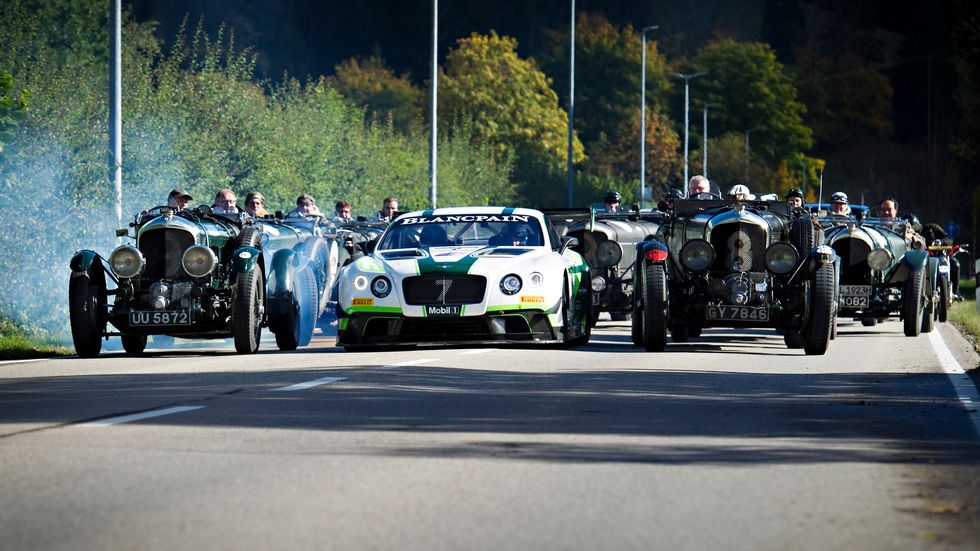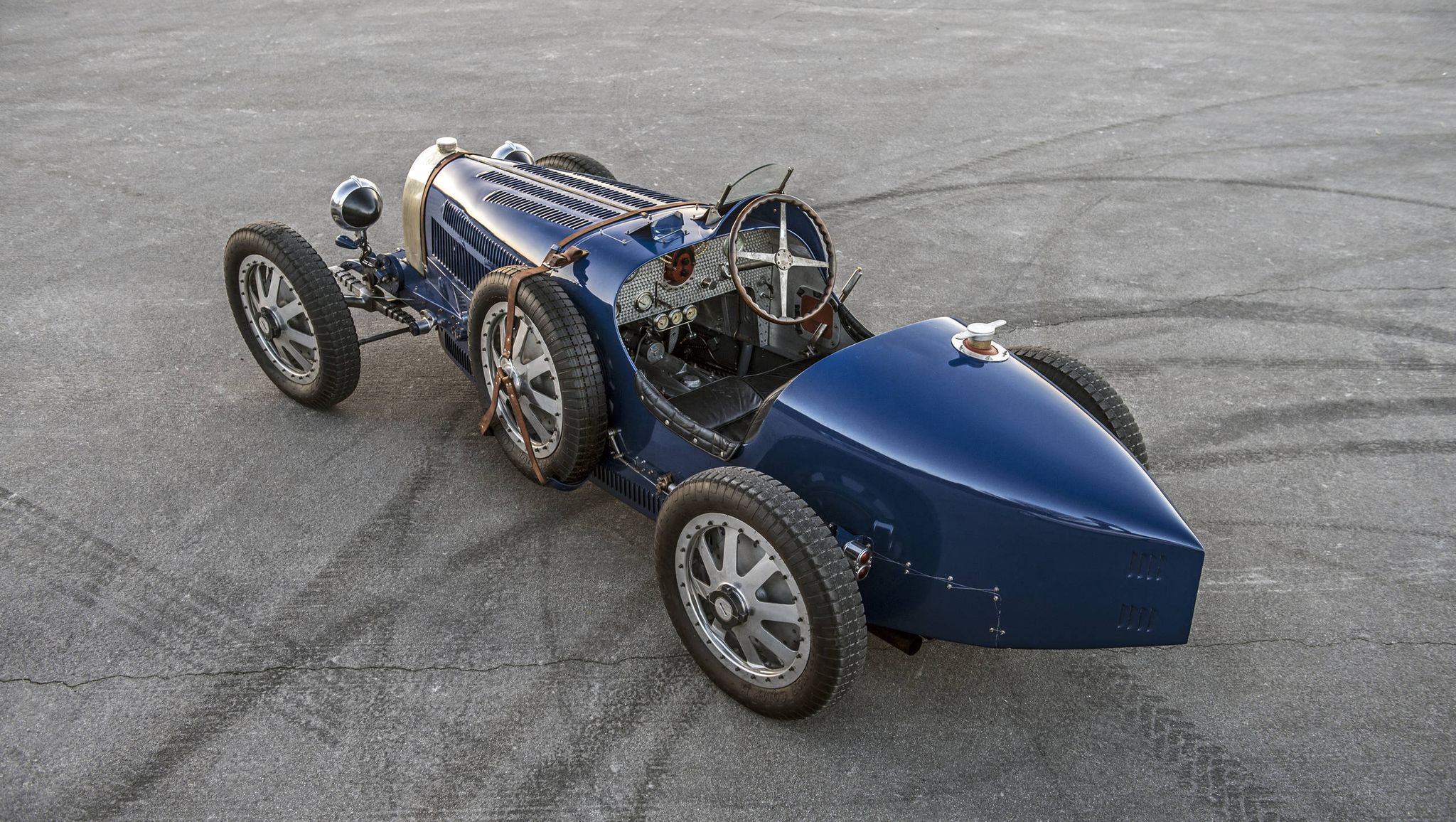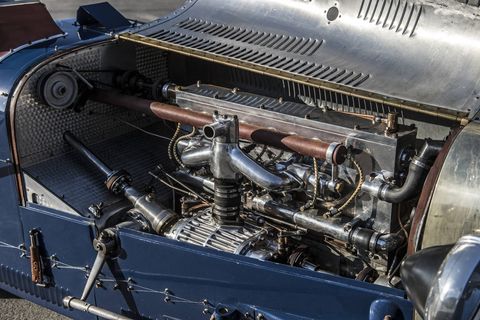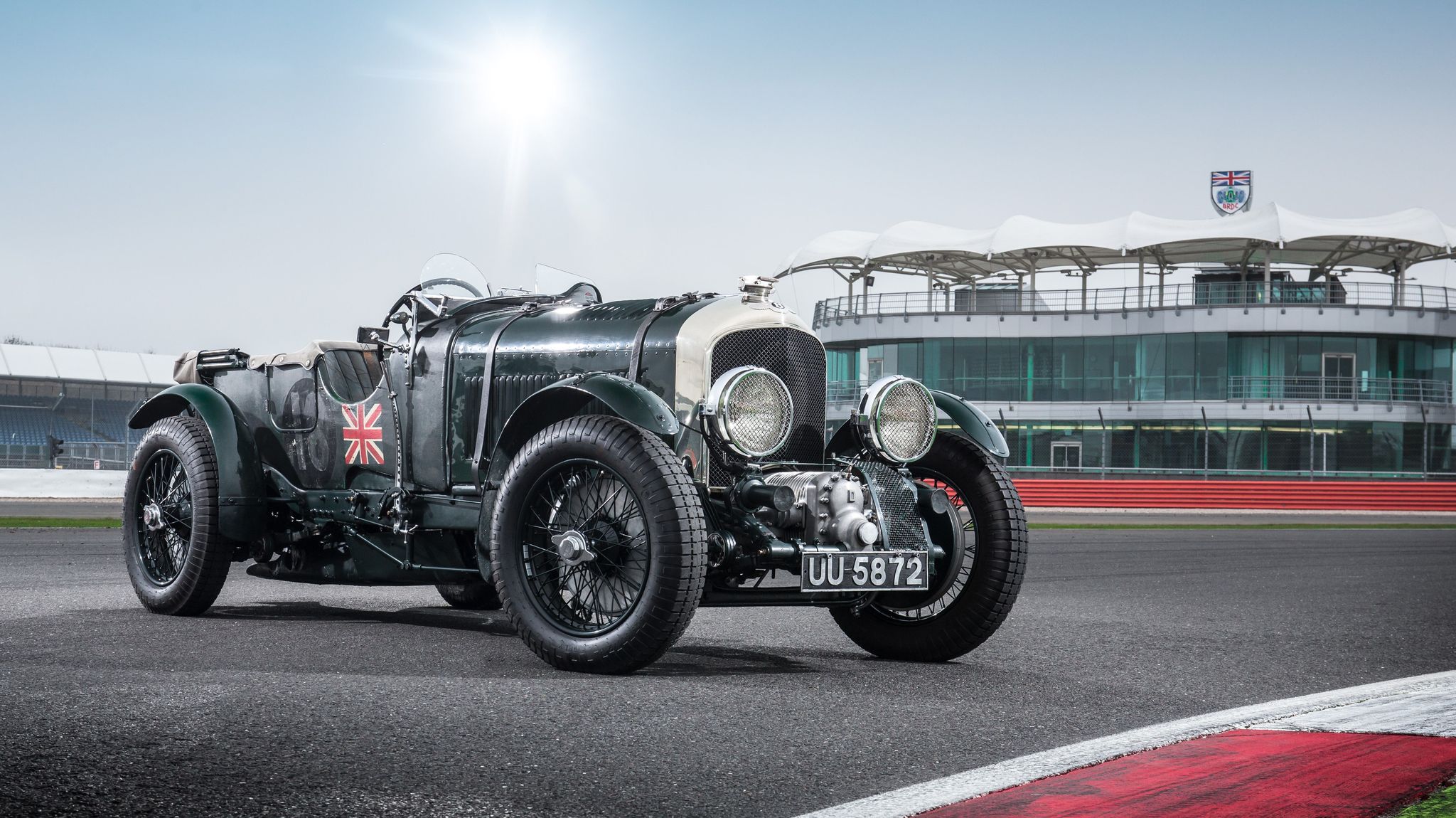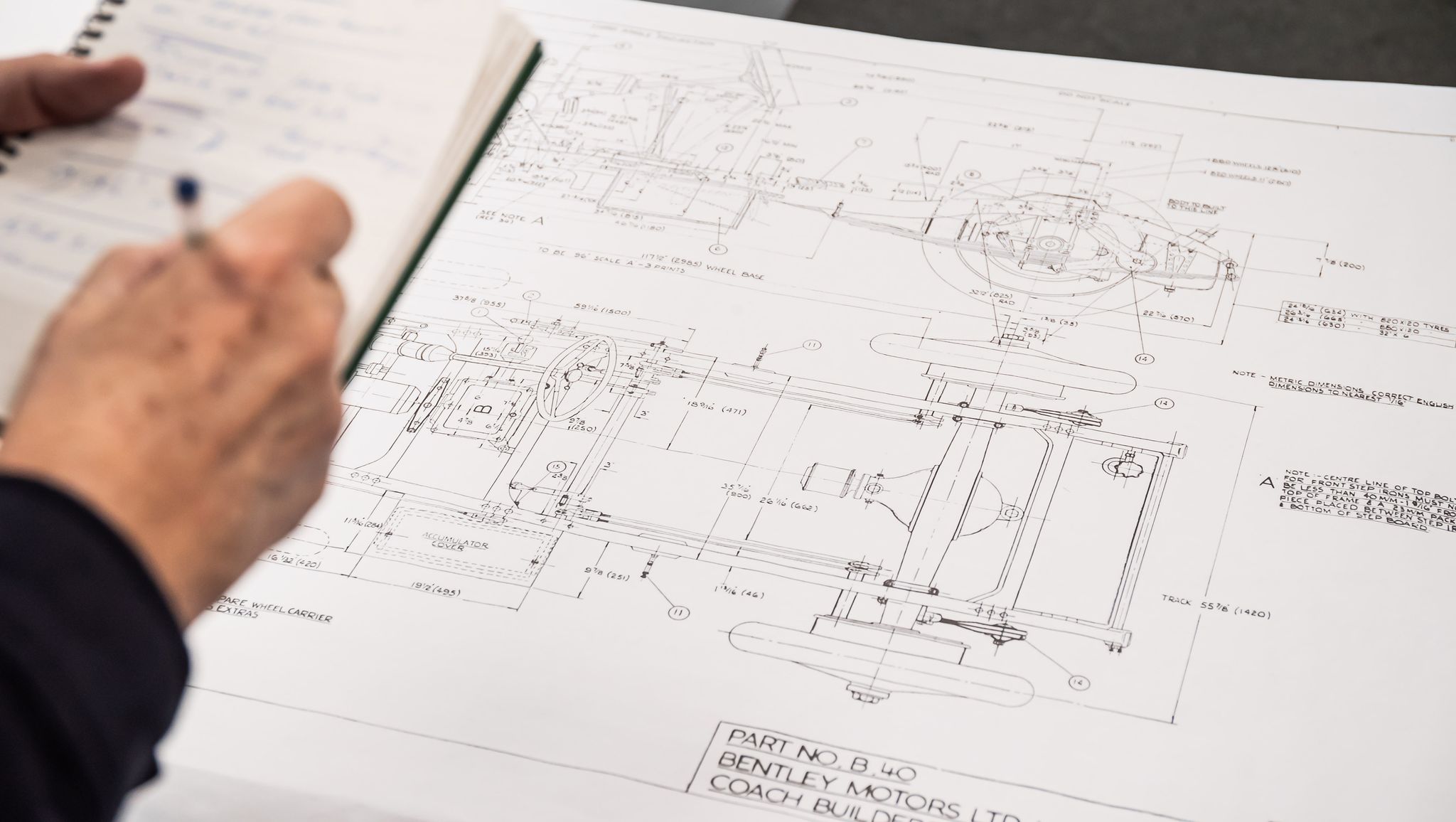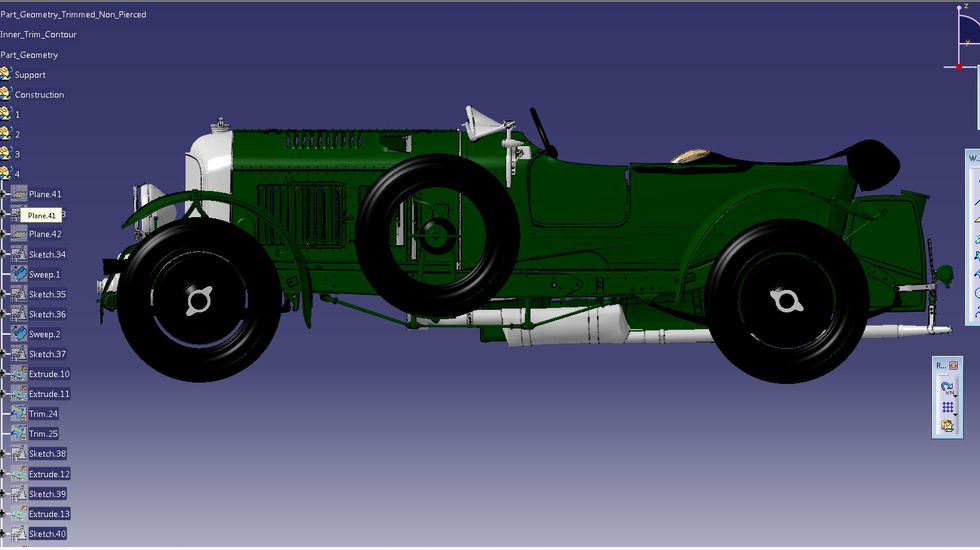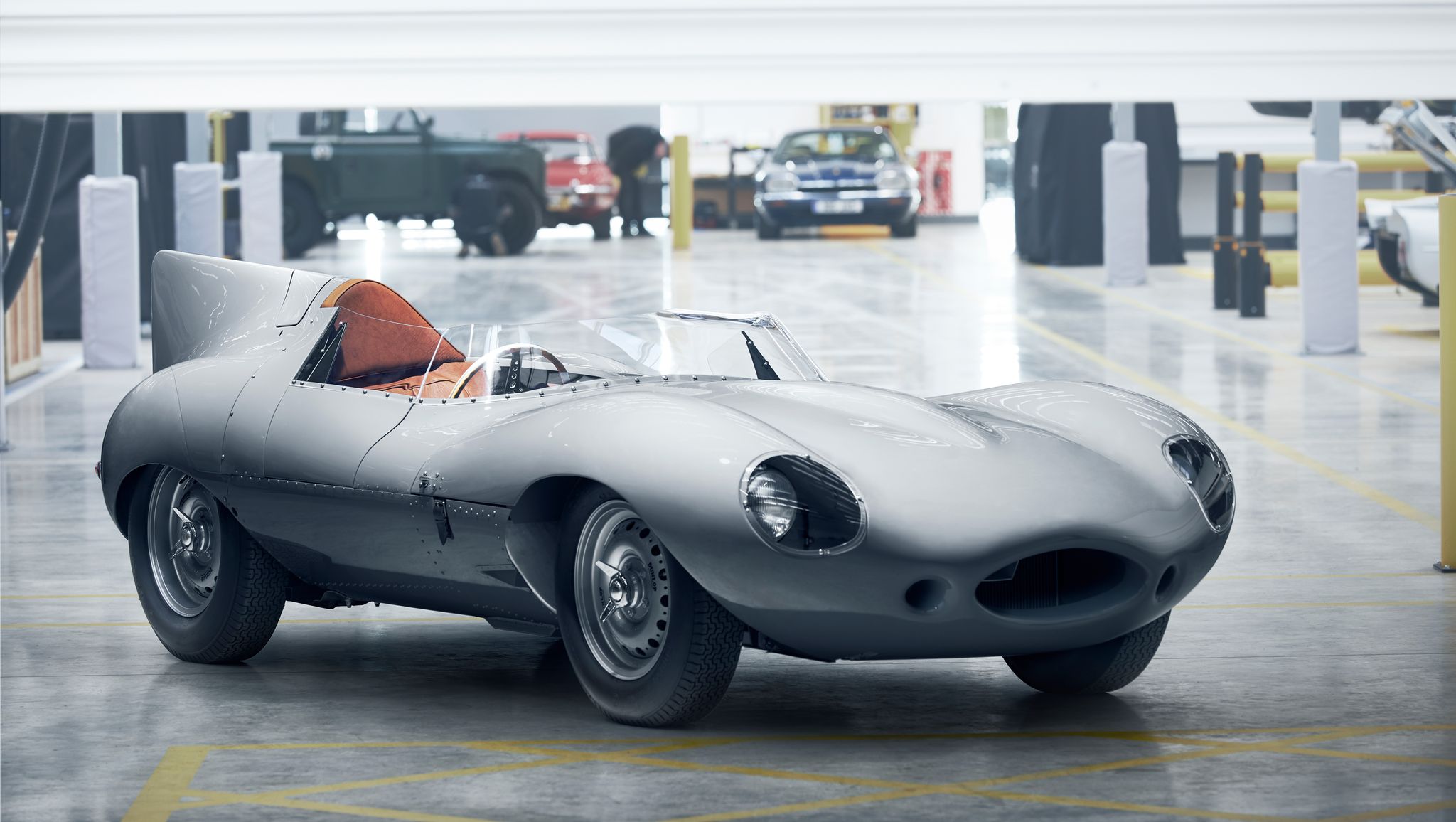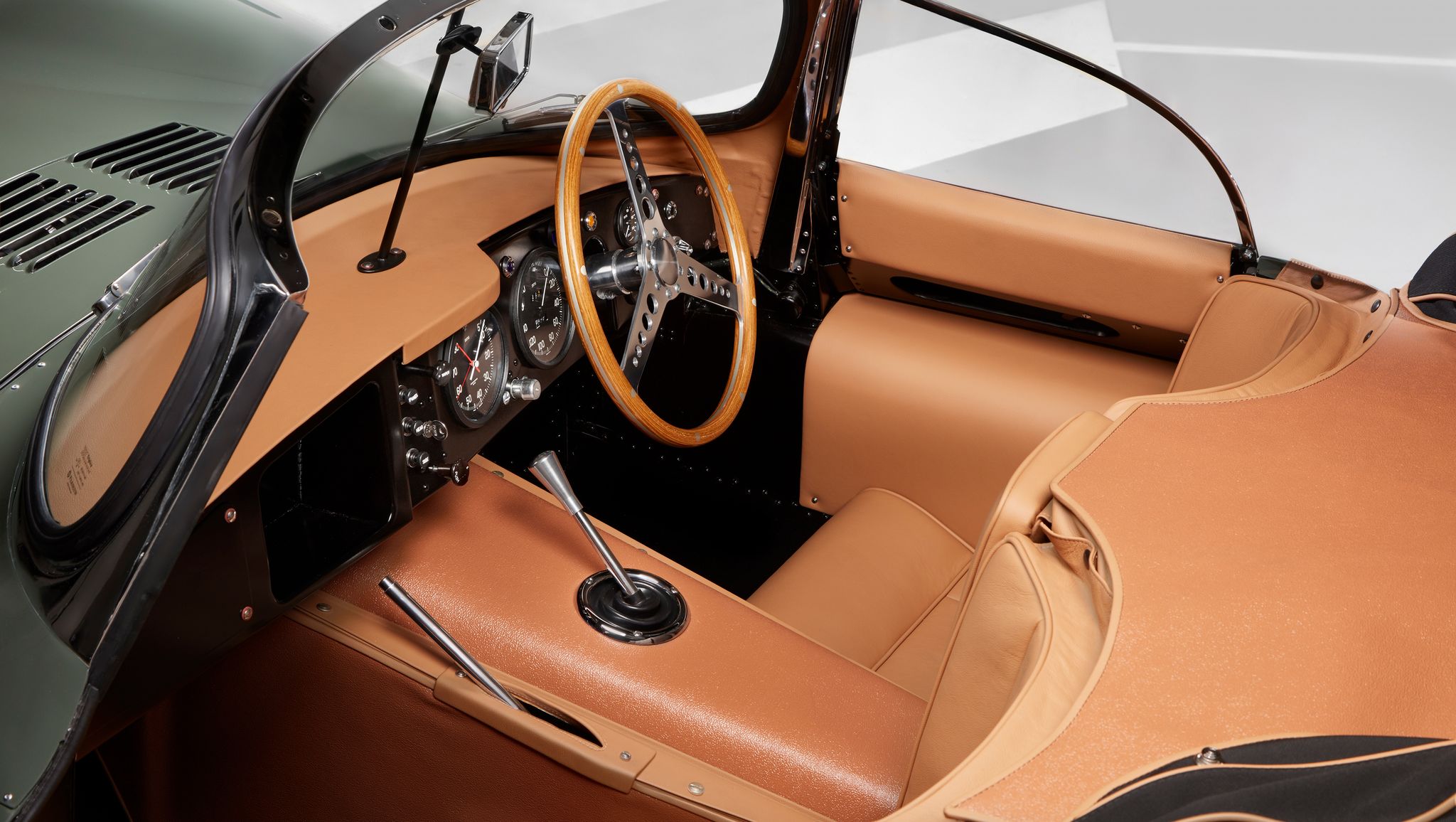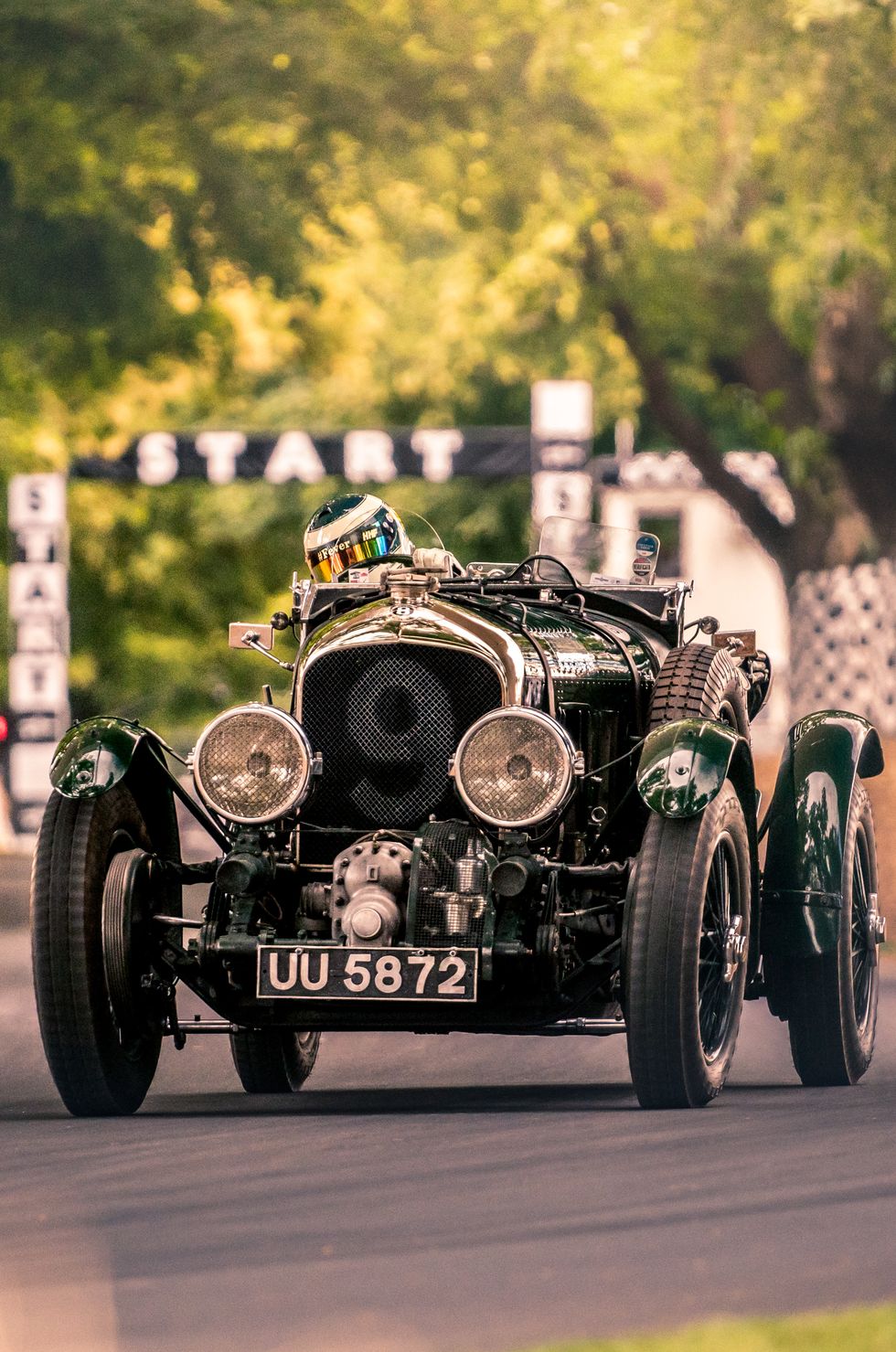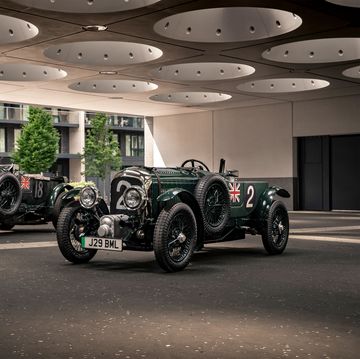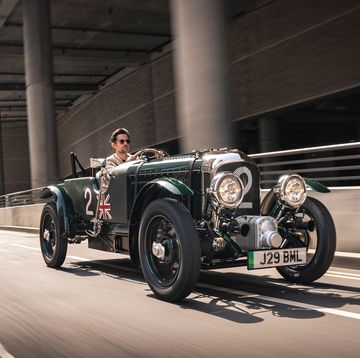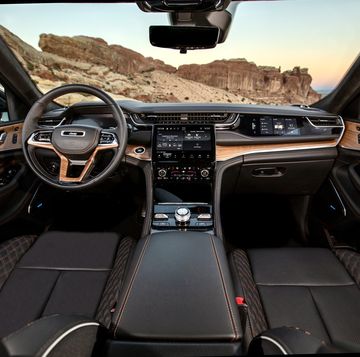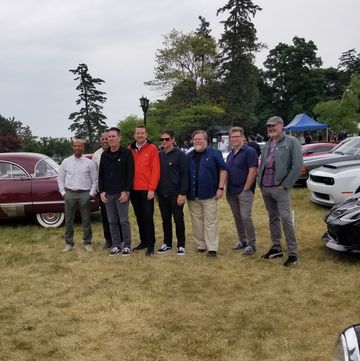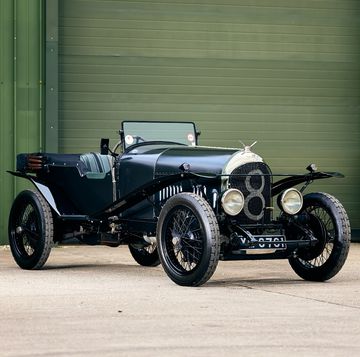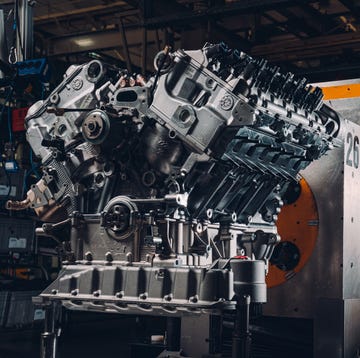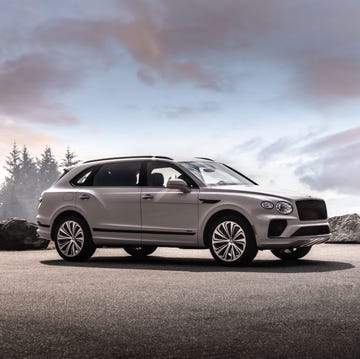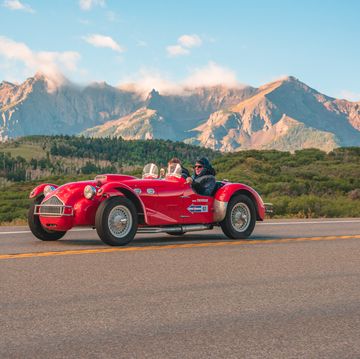The continuation cars are coming, and the owners of the originals—a small but influential contingent of them, anyway—aren’t happy about it.
In the case of Bentley, a fresh crop of 12 supercharged 4 1/2 Litre “Blower” Bentleys is in the works. Ahead of their arrival, Autocar reports, a group of important collectors, including Ralph Lauren, British businessman Anthony Bamford and others, has signed a letter to Bentley leadership “expressing their concerns” that the nouveau-Blowers will somehow detract from the four originals, which date back to the late 1920s.
Built at the insistence of racer Tim Birkin and over the initial objections of W.O. Bentley, the Blowers were never particularly good at finishing races in-period. But they’re damn fast, powerful, historically significant and, as anyone who’s ever seen one can attest, just plain cool. They’ve since become some of the most highly sought offerings from the marque.
Perhaps that’s why Bentley—following in the footsteps of Jaguar, which has produced E-Type Lightweight, D-Type and XKSS continuations, and Aston Martin, which has produced new DB4 GTs and DB5s—selected the the Blower for its first foray into the new-old school.
Never mind that these continuation cars are not billed as road-legal (though, come on, there must be a way) or that they don’t attempt to visually clone specific Blower cars from the prewar era, or that Bentley hopes their owners will use them in vintage racing events that will surely be spectacular—a handful of self-appointed keepers of the Bentley Boy Flame have decided that they’re no good. What’s more, it’s argued that they will actually somehow “dilute that special admiration and awe that can only come from viewing and embracing the genuine article,” according to the letter.
The idea that one’s enjoyment of a car is contingent upon others not having anything like it is about the most Mr. Burns-esque sentiment I can come up with, but then, I don’t own one of the highly valuable originals.
I have, however, been grappling with the idea of continuation cars since I set eyes on Jaguar’s first newly built XKSS—a piece of machinery as absolutely breathtaking as the originals. I loved that Jaguar had taken on that project, but at the same time, part of me felt like I should be more concerned. Why wasn’t I worried that the marque was cheapening its heritage? Why don’t I feel unsettled by Bentley’s upcoming Blowers or Pur Sang’s Type 35s?
Perspective is everything here: Especially with OEMs increasingly getting in on the game, these artifacts can be read as meaningful, respectful historical tributes or shameless cash-grab nostalgia plays; the undeniably immense effort expended in producing them is either retrograde or transcendent, depending.
Ultimately, though, the obvious arguments against continuation cars don’t stand up to scrutiny. Moreover, viewed in their proper context, these new-old vehicles prompt interesting explorations about what it is we truly enjoy about cars—and why we value “authenticity” even as we struggle to define it.
Continuation cars aren’t trying to fool anybody
“Continuation car” has always seemed like an odd name to call these things. When said continuation is occurring after a gap of a half-century or more, it can feel like a particularly complicated way of dodging the word “replica.” With its new XKSSes, Jaguar emphasizes that it is only building out the cars it had planned to build back in the day; the continuation vehicles will take chassis numbers set aside for them in the William Lyons era. You get the feeling Jaguar is trying to convince itself that it’s OK to make them
But the nomenclature does matter here, and “replica” isn’t an accurate descriptor either—it implies that you’re trying to re-create a specific car as it was at a specific point in time.
“The best way to describe it is, it will be a brand-new, 1929 car,” Bentley Mulliner division’s Tim Hannig says of the Blower project. “We are super-clear on what it is: It is a brand new car, of bits and pieces all totally new, but made to the old plans. We’re absolutely transparent about what it is, and what it is not. If we were to try to make it something it isn’t, it would be wrong in the outset.”
The collector market, at least, has no trouble telling them apart from the originals. The catalog for the upcoming RM Sotheby’s Elkhart Collection sale lists Jaguar XKSS, E-Type Lightweight and D-Type continuations, plus a handful of other replicas including a Pur Sang Bugatti Type 35 Grand Prix.
I asked RM Sotheby’s COO Alain Squindo about the representation of new-old vehicles in an auction that will include rare originals, including a Fiat 8V Supersonic and a Ferrari 225S. “I think that all comes down to presentation and making it all crystal-clear—and I think we are honest about that,” he says. It helps that the market already seems to recognize the continuation car as a distinct, valuable category in its own right.
“A continuation as we see it here is effectively built by the factory, with the original tooling”—or at least tooling that replicates the form and function of the original—“and with an extreme level of attention to detail,” Squindo says. “And, correspondingly, very limited production numbers. In the case of the E-Type, we’re talking about seven cars. And also the price point to boot—a seven-figure price when new, and we’re expecting that at auction.”
For his part, Pur Sang’s John Bothwell tends to refer to these sorts of vehicles as “tool room copies,” but doesn’t seem overly concerned with nomenclature. “The problem with what you call them is, you’re always changing the goal posts,” he says. “Because if you call it a replica—which is what it is—then the guy building the shitbox out of fiberglass and a Volkswagen engine, to market his product, he’s going to start calling his car a ‘replica.’ And then if you want to distance yourself from that guy by calling it a continuation, well then the guy making a shitty Cobra starts calling his car a ‘continuation.’
“What it is, is a perfect copy,” Bothwell says: exacting, authentically crafted but not intended to deceive. “I think the best analogy is if you find molds that were made 100 years ago for a bronze sculpture. And those sculptures were cast back then—they’re undisputedly authentic and valuable pieces of art today. Then you pull the mold out and you pour another statue, make another casting out of it. It’s a new version of it, but it’s no less authentic than the original. It’s identical. And that’s certainly the case with our cars.”
Continuations won’t devalue the originals
Whether you personally view cars as investments, individuals who have put vast effort and vaster sums of money into their vehicles don’t want to see their values undermined by knock-offs. The impulse is understandable, but there doesn’t seem to be anything to fear from continuation cars on this front.
For one, an increase in the total supply of Blower Bentleys does nothing to increase the supply of old Blower Bentleys. More than ever before, originality and provenance is prized by collectors. Known ownership history, race involvement and so on can greatly increase a given vehicle’s value, even compared to another outwardly similar vintage example. Continuation cars replicate (to use that fraught word) the originals, but they come with no provenance preinstalled.
The numbers bear this out. “I don’t think there’s any data to suggest that any continuation cars are detrimentally affecting the market for the originals by any stretch of the imagination,” says RM Sotheby’s Squindo. “Consider: What’s the most replicated car on the planet? The Shelby Cobra. They’ve been making them for decades. And data clearly suggests that the value of (the originals) has escalated dramatically; they’re still blue-chip collector cars.” Though the initial run of Cobras has been dwarfed by the number of fiberglass replicas and even Shelby-sanctioned continuation cars, “the originals stand in a class of their own.”
Before Bentley, Hannig was involved with Jaguar-Land Rover’s continuation-car effort. “The fact that these projects were publicly known and reported about made the period-built cars more known, more famous and effectively had a positive effect on the period cars’ values,” he says. “Long story short, when the lightweight E-Type project started, a period lightweight E-Type was worth half the money it is now.”
With values of vintage cars rising, in some cases astronomically, it is more likely that originals and continuations will come to be valued in distinctly different ways: one for its history and rarity, and the other for the experience it offers.
“A car that’s not understood through the driving experience is a car that cannot be understood. Period,” Pur Sang’s Bothwell says. “And when cars get older, there’s this dilemma: Well, it’s an old car. What do we do with it? Because it’s so valuable.
“Then you get guys—the English are very good at this—who will still drive the everliving piss out of it, which is really cool. But that’s got a shelf life to it. You can only do that so many times before you end up replacing a wheel, replacing an axle, a block, and before you know it there’s nothing of the original car there.”
Here the modern re-creations step up to the challenge, “because you can experience the car, understand the car and appreciate the car” without threatening a time-capsule example’s originality. “If I had all the money in the world, I’d be buying every old Bugatti that I could, and I’d preserve them,” Bothwell says. “But I don’t think I’d drive them the way I drive the Pur Sang cars.”
Continuations benefit owners of the originals
According to Hannig, the Blower Bentley continuation project started off as a “mild restoration” of the automaker’s own car, which sees a lot of use. It spiraled out of hand, as mild restorations tend to do, “to the point where we said, if we do a restoration, why don’t we consider building effectively a replica, and have a car that would almost be like a stunt double—one that does all the heavy work. And the real car does only light work.”
But doing that meant making innumerable unavailable pieces from scratch. And if you’ve done all the work to get to that point, why stop at one?
“In order to create the 12 cars, we’ll tool up for all the bits and pieces that are not available anymore,” Hannig says. The broader benefit is that “then these will be available—effectively made by the same technology, the same processes with which they were built in-period—for the period-built cars as spares, which is great.”
But it took this scale of production, limited as it may be, to get the economics to start to work. “We can only justify that because there’s enough, I’d say, meat on the bone in terms of financials to justify the investment into the tools.”
And that’s not all. “The other super important bit is the knowledge,” he continues. “These cars, specifically the Birkin car, was built by Tim Birkin in his own workshop. The documentation we have on it is very, very small and very, very limited. So we have to do what I call industrial archeology, to dig around and find out, what is this car, precisely? In terms of components, materials used, etc. To build new cars, you have to master and understand the original throughout, from scratch, in every bit and every detail. And we’re documenting that as well.”
The Blower continuation project spent 1,200 man-hours just to create a highly accurate computer model of the Bentley-owned car. It seems reasonable to venture that the team responsible for this project knows more about the insides and outs of the model than just about anyone currently alive—possibly even the individuals who built it the first time around.
Pur Sang doesn’t limit itself to offering complete cars, either. “We sell engines all the time to people who own original cars; we sell parts all the time,” Bothwell says. And they don’t just work as intended—they’re built as authentically as possible, too.
There are subtle upgrades in machinery and methods here and there. For components like wheels, which are traditionally cast but machined using computer-guided equipment, he explains, “whether you get there by a guy standing there, manually operating a lathe, or whether you get there because it’s done by a CNC machine, it doesn’t really matter. Because the end product is a wheel set to a specific tolerance.” Modern metal alloys are used in areas where the original 1920s and 1930s formulations leave a little something to be desired.
“There are other things, like panel-beating, where if you were stamping these things out, you’d get a certain mass-produced feel to, say, the body panels. But as it is, we don’t do that, so you get the tooling marks on the inside of the louvers, you can see all the signs of something that was hand-built. For every single thing that matters, we are absolutely doing it the old-fashioned way.”
The resulting Pur Sang-made components are interchangeable with the originals, Bothwell says, to the extent that parts for any series-built but hand-fitted car can be. And in producing and selling both parts and complete cars in as traditional a manner as possible, where it makes sense to do so, it is helping to keep dying skills alive—something that can benefit owners of new and old vehicles alike.
Why do we only care when it comes to cars?
No one seems to bemoan the ongoing production of mahogany runabouts, or Eames chairs, or Birkin bags or Rolex Cosmograph Daytonas. These items are all eagerly collected, and the market is apparently capable of distinguishing between new and vintage examples and valuing them accordingly.
Rather than condemning companies for flooding the market, we tend to praise them for honoring history and heritage by keeping time-tested designs in production, in turn keeping craftsmen employed and their skills viable.
Cars are special to me—more so than handbags, watches or furniture—but when it comes to the new-production aspect of the continuation question, I cannot draw an objectively defensible distinction between vintage automobiles and these other desirable consumer goods.
It’s more than a little ironic, then, that Ralph Lauren is part of the anti-continuation crowd. Lauren has accomplished a tremendous amount over the past half-century, but he’s never had a problem with referencing (to put it mildly) the past in pursuit of his timeless, and highly marketable, lifestyle ideal.
Sometimes, these references are pretty explicit: Until recently, his label offered an “Iconic G-1 Bomber Jacket,” a “reinterpretation” of the leather flight jackets produced during WWII that looks an awful lot like a replica (er, continuation), yours for just $1,195. This isn’t the only military-derived garment the company has produced. The originals are highly sought pieces with a palpable air of history about them. Could a collector of genuine military memorabilia argue that the Ralph Lauren replicas “make the originals less special?” Well, why not?
But, when the subject shifts to old Bentleys, the conversation suddenly changes.
Continuations prompt us to examine what we value in cars in the first place
In writing this, I’m not expecting to change the likes of Lord Bamford’s opinion of the upcoming crop of continuation Bentleys. But the proliferation of new-old cars, and the debate that has swirled up around them, is an excellent opportunity to pause and take stock of what it is about old cars that we appreciate—especially as newer cars veer into curious philosophical territory.
Do we prize old cars because they’re old and rare, or are we instead drawn to the particular qualities, whether aesthetic, mechanical or experiential, that have made them worth preserving for decades in the first place? If it’s primarily the latter, that is (in my mind) total justification for the existence of continuation cars and high-quality replicas.
But each of us has a unique mix of reasons for being captivated by vintage machines. Some collect cars as others might art; beyond the aesthetics, the exclusivity that comes with owning a near-priceless one-of-four vehicle is no doubt part of the appeal. Others cherish the historical significance of a particular model, or even of an individual vehicle with exceptional provenance. Some of us just like old cars for the particular holistic experience they offer; the fact that they’re old is almost incidental.
At least at this point in my life, I fall mostly in that last camp. If you give me the choice between an original Blower Bentley and its near-century of accumulated history too precious to risk by driving it or an otherwise identical but new version I can enjoy without fear, I’m going to take the second one every time. I’m going to have a good time telling my own story with it, creating my own provenance.
And if I happen to pass by another one on the road while I’m out—something made only marginally more likely by the existence of the other 11—I’ll smile and wave, glad someone else gets to share in the experience.


